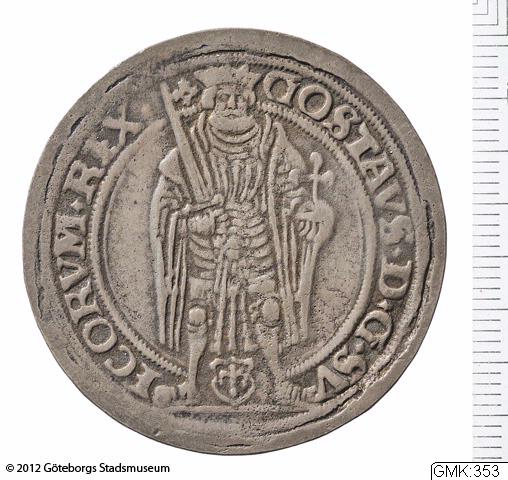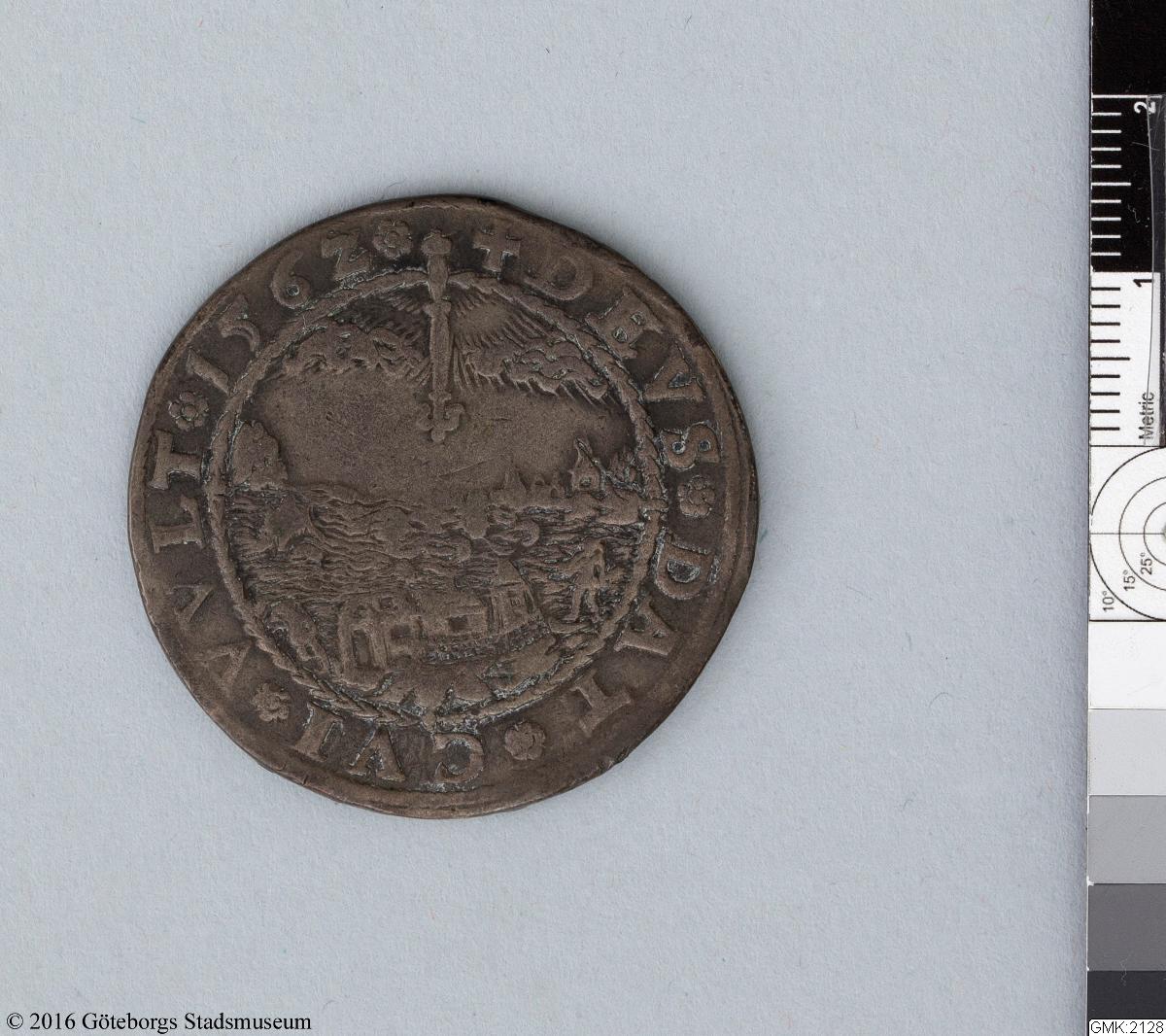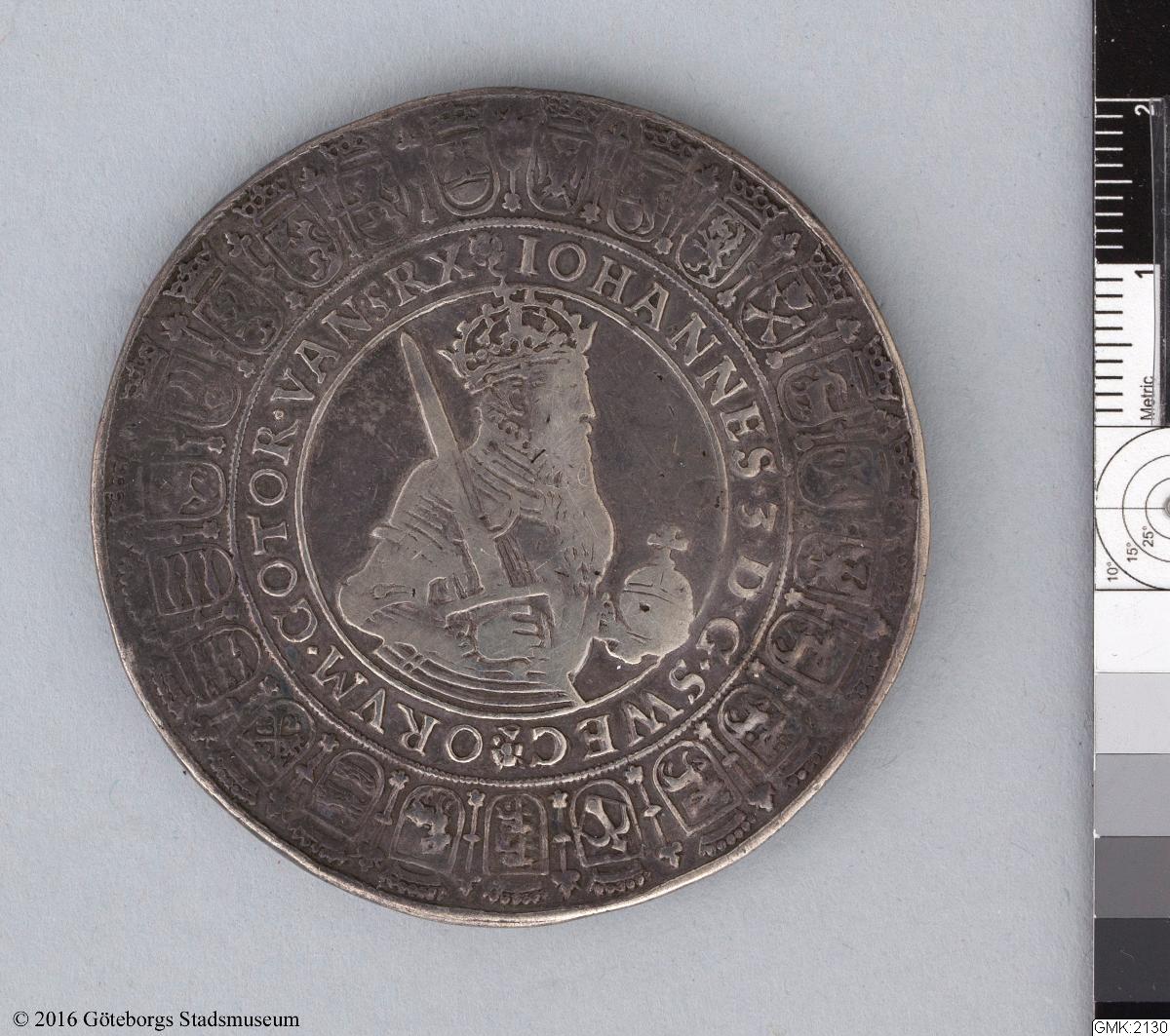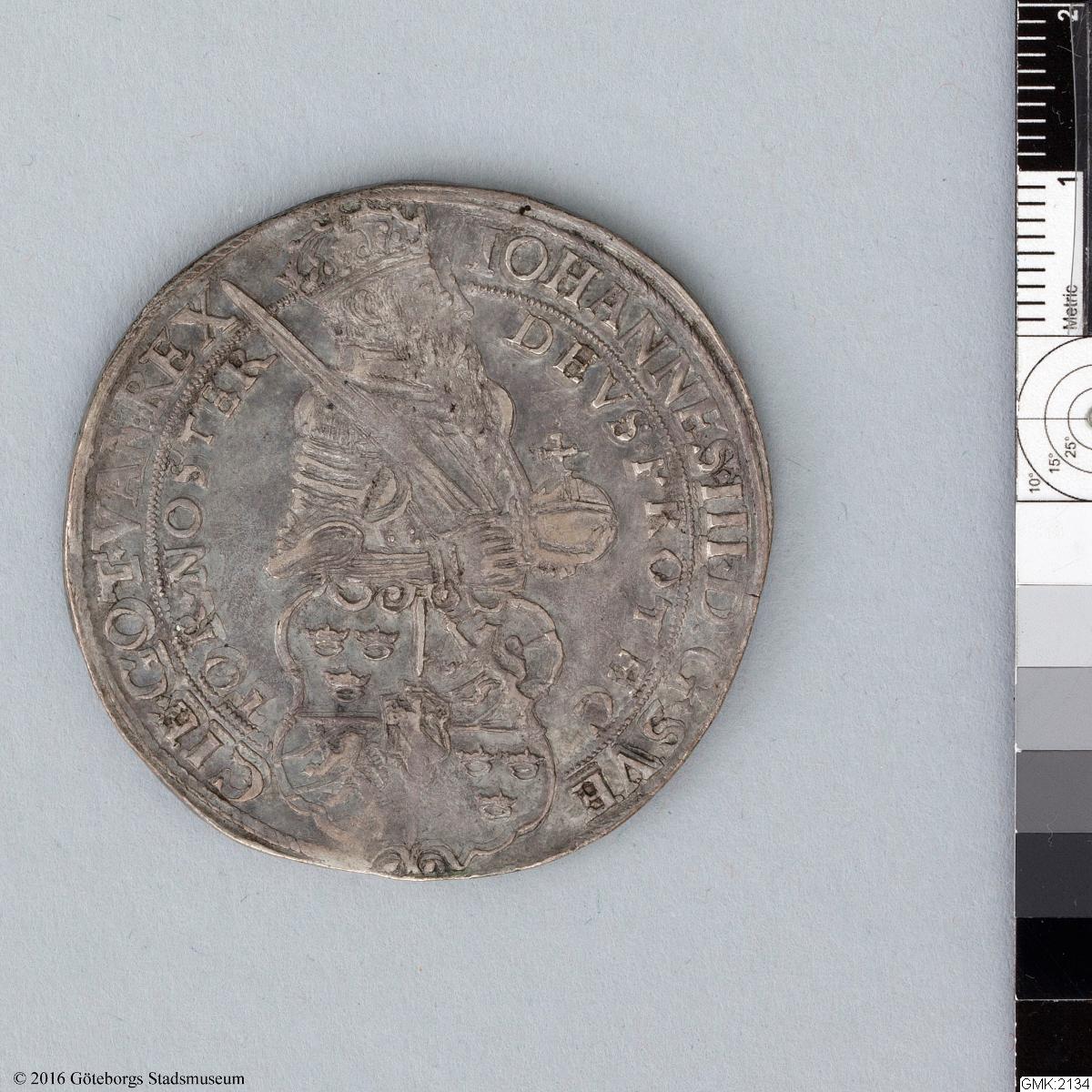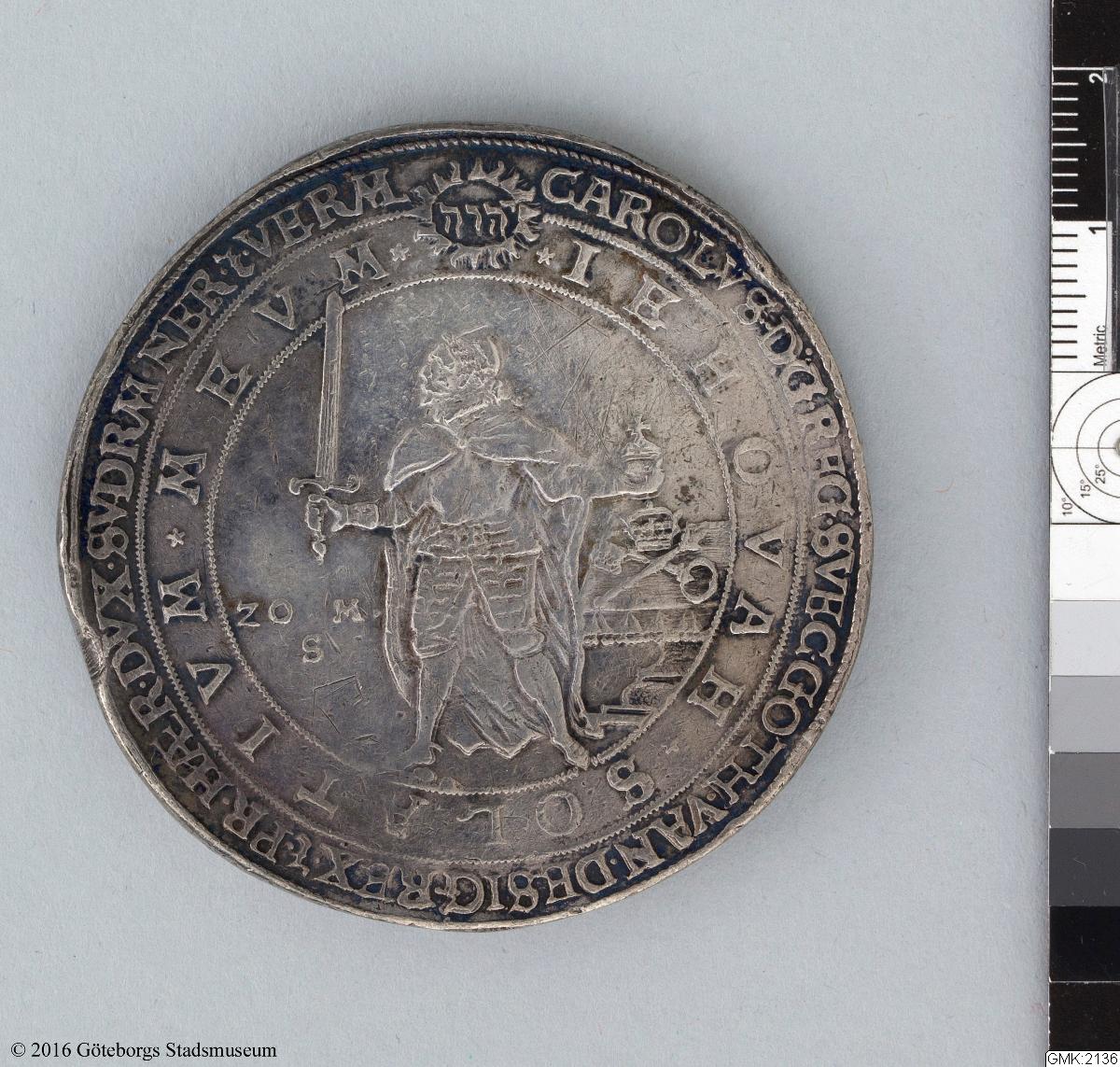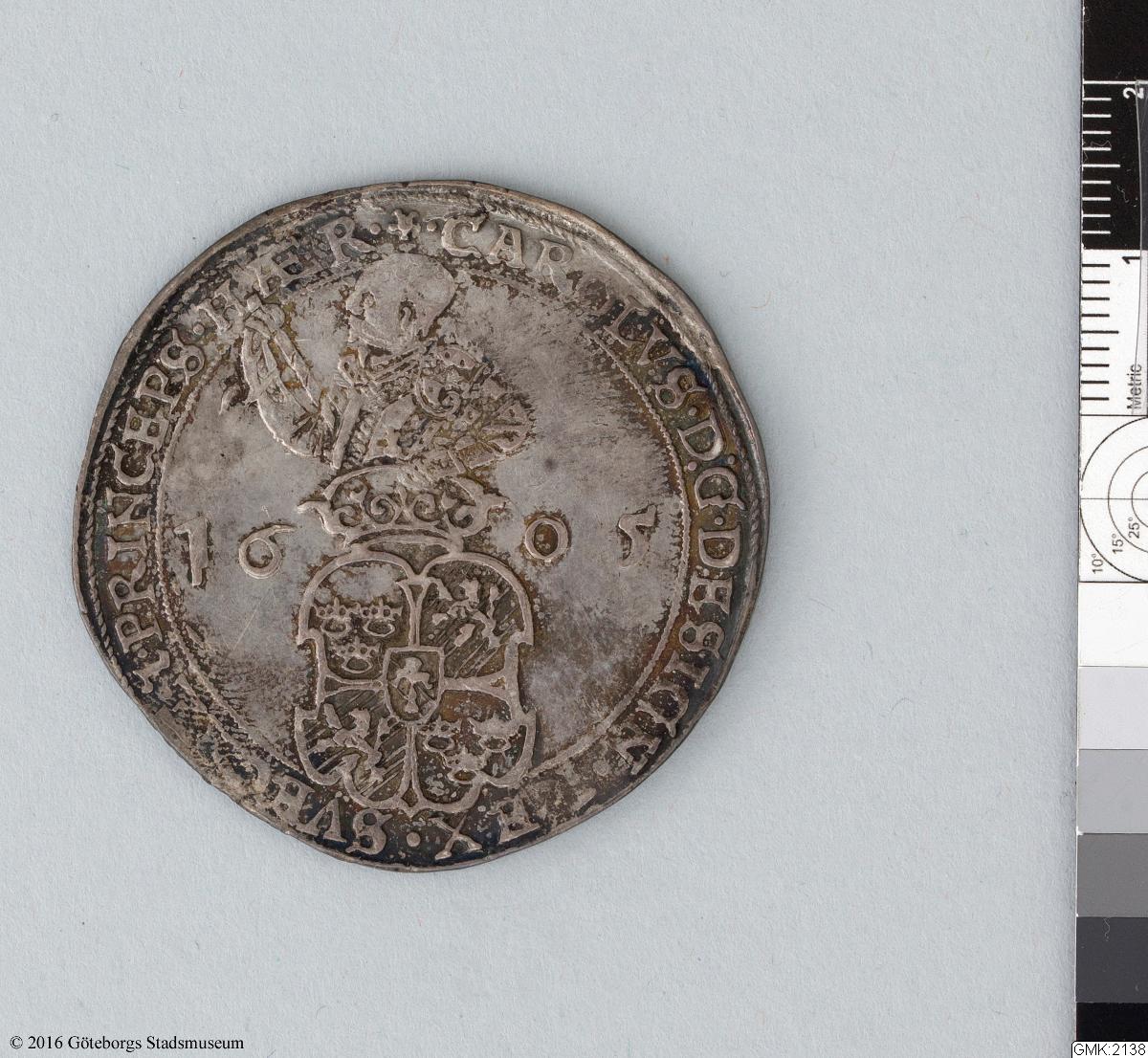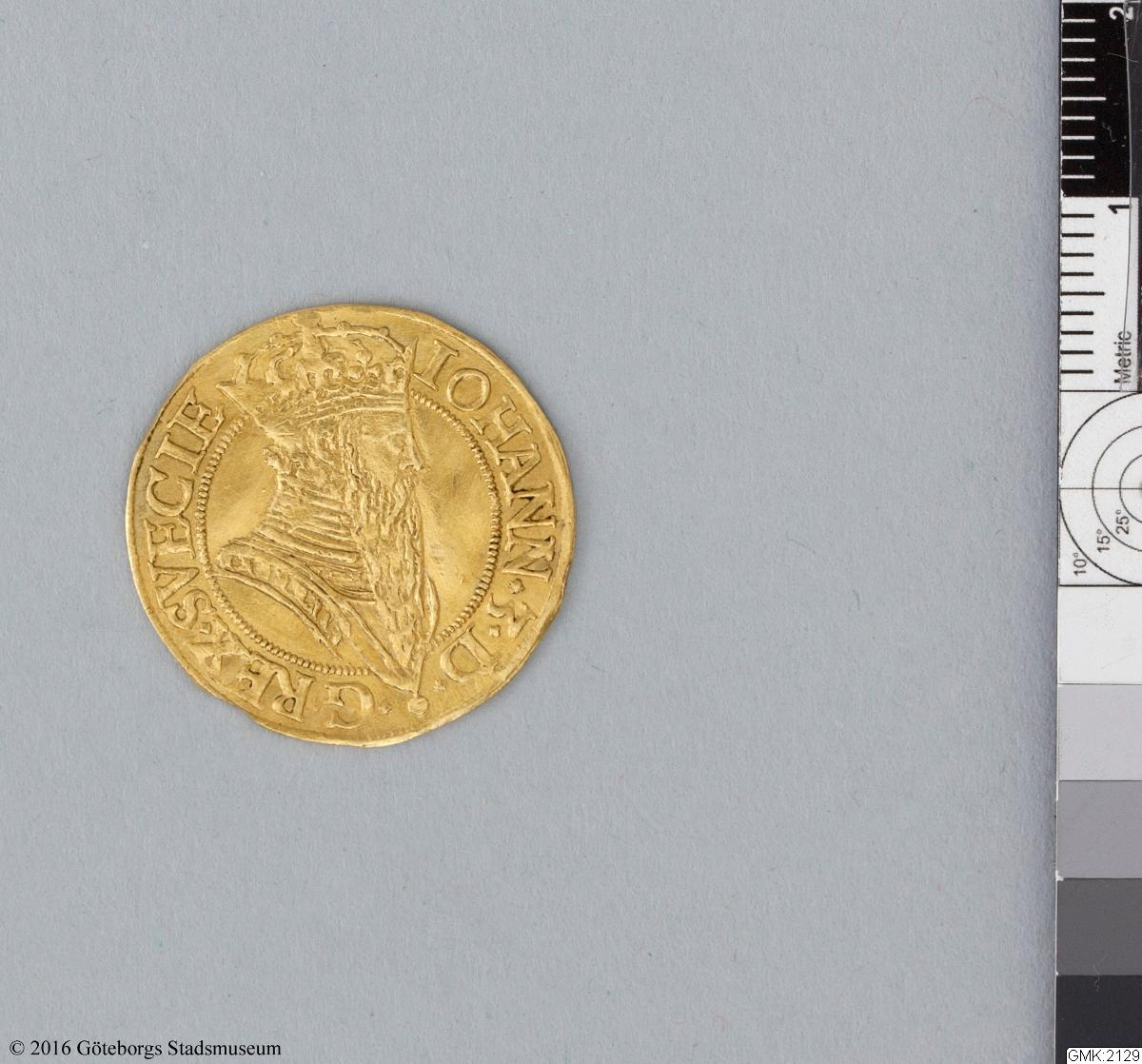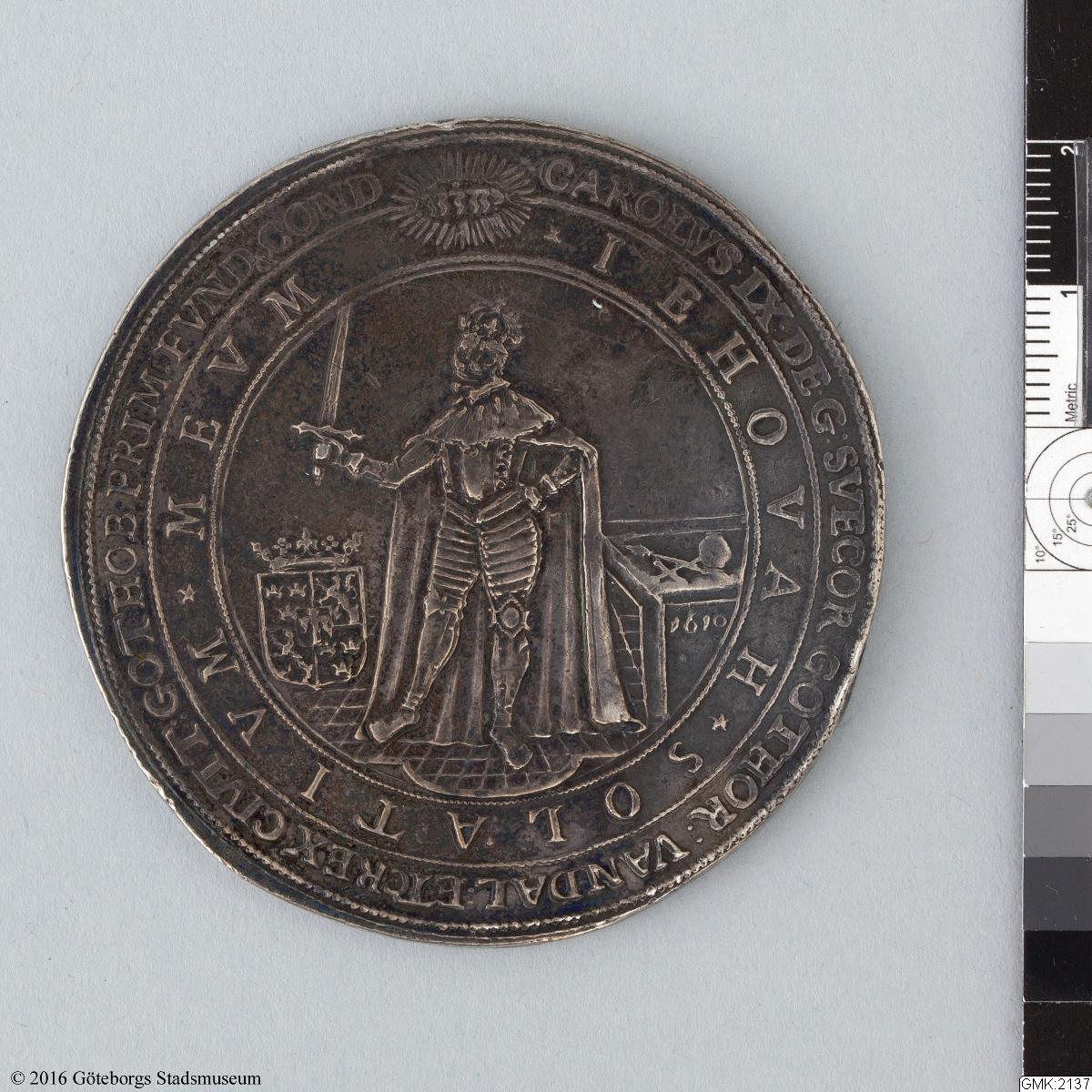Commemorative

Kings and queens often ordered a special kind of coin to be struck in connection with major events such as their own coronation. These coins contain more precious metal than ordinary coins do, are issued in a limited edition, and are really intended to be saved not spent. Sometimes called praktmynt or praktpenning in Swedish (literally: “splendid coins”) they are richly decorated and can therefore look like a medal. Sometimes they are actually called medals and used in the same way.
Commemorative coins were a way for the king or queen to display his or her power and wealth. Gustav Vasa ordered commemorative coins to be made in 1528 when he was going to be crowned. A monarch could also display his or her generosity with the help of largesse coins (in Swedish, kastmynt, literally: “throwing coins”). These were coins struck to commemorate royal events and their name came from the fact that they were thrown (kastade in Swedish) out among the spectators.
Nowadays, coins struck to commemorate events or to honour something are called jubilee or commemorative coins. And they are for sale. In 2010 a 300-kronor coin containing 92.5% silver was struck to commemorate the wedding of Crown Princess Victoria and Prince Daniel.
